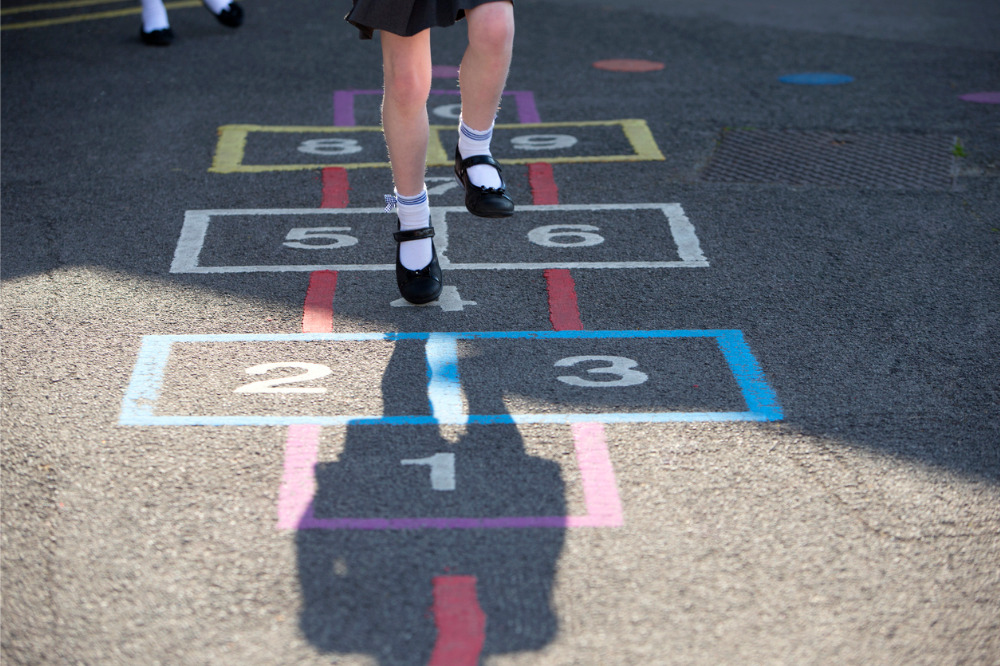
by Helen Connolly
This International Children’s Week it seems apt to reflect on the fact that as a community, we have well and truly lost sight of the importance of free play for tweens and teens (children aged 9 to 19 years). At the same time, and perhaps unsurprisingly, we have seen an increase in childhood loneliness, social anxiety, and general levels of sadness.
Every week I meet too many South Australian kids who tell me they’re unhappy with their lives, and that they don’t feel as though they belong either at school or in their local community.
Whist it would be too simplistic to ignore the big social, economic, and environmental challenges that are undoubtedly contributing to kids’ overall unhappiness, it is also too defeatist to simply throw up our hands and accept that the impact of these global trends is too overwhelming for us here in SA to do anything about this.
But we can and must do something about it. We often punch above our weight in other areas, and just maybe we could also do this in relation to how we look at the importance of promoting more opportunities for free play for our tweens and teens.
We could achieve this by focusing our attention on delivering on the everyday things kids tell us will make a real difference in their day-to-day lives. These are things that may surprise you. They include opportunities for running, jumping, climbing, balancing, rolling, riding, swinging, sliding, role play, scooting, skating solo or with others, taking physical risks, socialising with friends and family, and being creative in their own ways, in their own time, and on their own terms. In other words, having many more opportunities to actively participate in free play.
As I look around my neighbourhood, it is hard to see much free play going on. There are no kids playing games in the street, or riding bicycles, or making cubby houses on vacant blocks or even on their front porches. These previously common play activities are now so uncommon that when the occasional ‘free range’ kids play in public spaces they are frowned upon or seen as presenting an unnecessary risk to themselves and the public.
Similarly, groups of kids gathering in parks or around venues are generally seen as a threat. They’re usually treated with suspicion by adults and assumed to be up to no good or just wasting time. Even in schools the pressure to deliver curriculum has prioritised formal approaches to teaching and learning with time set aside for play while children and young people are at school almost non-existent, apart from when students are in their early years.
Even at recess or lunch it’s now more common to see groups of students of all ages, sitting and walking around the yard rather than playing tag, fly, hopscotch, or handball, or engaging in games that involve larger groups of students. Designated ‘play spaces’ for high school students are almost unheard of, and with the transition of Year 7 into high school there is an extra year of lost opportunity for younger children to enjoy play time.
Our approach to child development could involve a commitment to building our children’s overall happiness, optimism, and satisfaction by creating opportunities and time in their day to engage in regular free play. This would support them to develop a sense of belonging, build friendships and to experience what it feels like to enjoy good physical and mental health on a day-to-day basis.
We could become Australia’s most ‘play friendly state’. We could achieve this by applying a strategy that compels all levels of government to consider the impact their decision making has on whether it delivers more (not less) opportunities for children to engage daily in play.
To really work, it would need to be a strategy that could cut across planning and transport, education and health, climate, and safety, and which would recognise that developing physical, social, mental, emotional, and creative skills through play is key to children and young people’s overall wellbeing; critically important to ensuring they can take full advantage of the other opportunities we are aiming to create for them, now and in the future.
In simple terms, our strategy should be facilitating and encouraging opportunities for tweens and teens to just be mucking around and chilling out more. We should be investing in places that encourage this age group to feel welcome to come and play in their local communities. We should be opening more youth centres, employing more youth officers, opening libraries at night, and reviewing our planning rules to create more outdoor play spaces, more walkable suburbs, and more leisure offerings that don’t require adults to drive kids to specific places to play.
Before this idea is dismissed as being too naïve to have any value, we should take a moment to look to the evidence that has recognised for decades the importance of enshrining play as an international right of children and young people. Fulfilling our international duty to support children and young people of all ages to play indoors and outdoors at school, and in their community is simply part of the commitment we made when we signed up to the UNCRC more than 3o years ago.
We have an obligation to make choosing to spend their time playing easier for kids of all ages. We need to do this by making the places they go to more ‘playable’. This means looking at how we promote time for ‘play’ at school and in our communities; at libraries, churches, health centres, community service centres, and shopping centres to name a few. These are places that should actively support, encourage, and prescribe play for tweens and teens, enabling them to reap the benefits we already know free play provides, both now and in their future.
Helen Connolly is the Commissioner for Children and Young People, SA.


